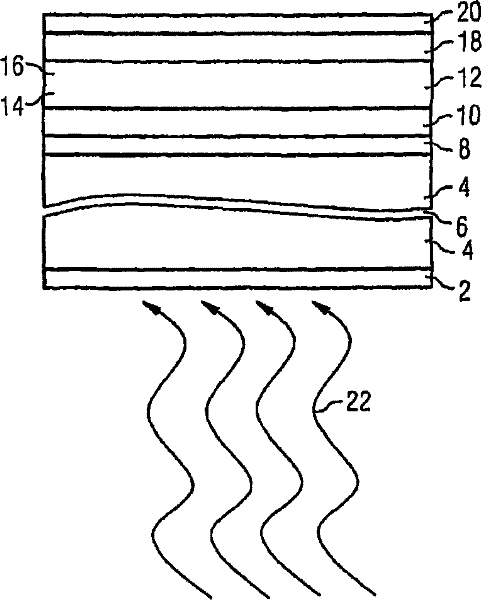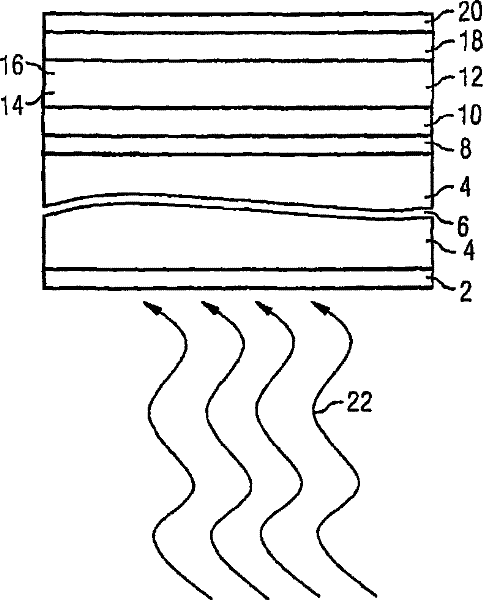Organic solar cell comprising an intermediate layer with asymmetrical transport properties
A photoelectric cell and electronic conduction technology, applied in circuits, photovoltaic power generation, electrical components, etc., can solve problems such as no known solutions to improve parallel resistance
- Summary
- Abstract
- Description
- Claims
- Application Information
AI Technical Summary
Problems solved by technology
Method used
Image
Examples
Embodiment Construction
[0024] figure 1 A cross section of a solar cell according to an embodiment of the present invention is shown. The solar cell is seated on a carrier material or substrate 4 . The substrate 4 can be made of glass, plastic, crystal and other materials. The substrate 4 is shown with a burst line 6 to show that the thickness of the substrate 4 is not critical to the invention and is variable. The substrate serves only to provide the solar cell with a corresponding mechanical stability and, if necessary, to provide surface protection. The side of the substrate facing the incident light is coated with an anti-reflection layer 2 to avoid loss due to reflection.
[0025] The first layer 8 on the substrate is the electrode of the solar cell. It is not important whether the electrode is a cathode or an anode.
[0026] It is assumed here, without limitation, that light enters the solar cell shown through the substrate 4 from below. Therefore, the first electrode 8 should consist of,...
PUM
 Login to View More
Login to View More Abstract
Description
Claims
Application Information
 Login to View More
Login to View More - R&D
- Intellectual Property
- Life Sciences
- Materials
- Tech Scout
- Unparalleled Data Quality
- Higher Quality Content
- 60% Fewer Hallucinations
Browse by: Latest US Patents, China's latest patents, Technical Efficacy Thesaurus, Application Domain, Technology Topic, Popular Technical Reports.
© 2025 PatSnap. All rights reserved.Legal|Privacy policy|Modern Slavery Act Transparency Statement|Sitemap|About US| Contact US: help@patsnap.com


